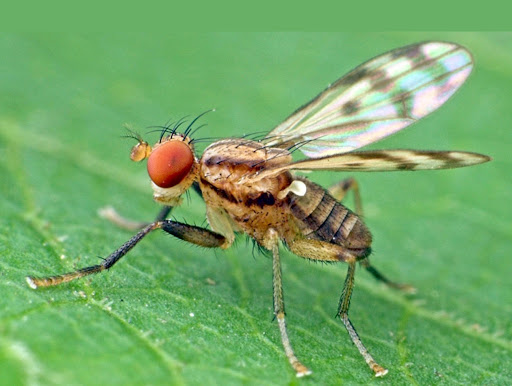 |
| Colobaea sp. in Bratt, Knutson, et al. 2020. |
Abstract
All reared larvae of flies of the genus Colobaea Zetterstedt, 1837 (Diptera: Sciomyzidae), which comprises 15 valid species, kill and consume freshwater nonoperculate pulmonate snails. New data are presented on the geographic distribution, biology, morphology of immature stages, and classification of Colobaea. Life cycle information is provided from field data and laboratory rearings for four of the 11 Palearctic species—C. bifasciella (Fallén), C. deemingi Knutson & Bratt n.sp., C. pectoralis (Zetterstedt), and C. punctata (Lundbeck)—and for one of the three Nearctic species, C. americana Steyskal. Colobaea bifasciella is shown to be one of the most highly specialized parasitoid Sciomyzini, laying eggs on shells of Galba truncatula (O.F. Müller) and Stagnicola palustris (O.F. Müller) in temporary, intermittent, or vernal semiterrestrial situations. Each larva feeds in only one host snail, which is not killed until shortly before the larva completes development. Puparia are strongly modified to fit tightly within the shell of the host. The other reared species are shown to be less specialized than C. bifasciella, with eggs being laid upon vegetation, the larvae behaving as parasitoids-predators-saprophages of exposed aquatic snails, and the puparia of all four species being adapted to a lesser degree than C. bifasciella to fitting within the shell of the host snail. In nature, C. americana attacks Gyraulus parvus (Say) and Physa Draparnaud sp.; C. pectoralis attacks Anisus vortex (L.) and Bathyomphalus contortus (L.); and C. punctata attacks Gyraulus albus O.F. Müller, Lymnaea “peregra,” Planorbarius corneus (L.), and Planorbis planorbis (L.). In the laboratory, these species also attacked and consumed other freshwater nonoperculate snails; C. deemingi was reared on Gyraulus intermixtus (Mousson) and Radix gedrosiana (Say), and an adult fly of the Palearctic C. distincta (Meigen) emerged from a puparium found in the shell of Anisus spirorbis (L.) collected in nature. Described and figured are eggs, larvae of all three instars, and puparia of the five laboratory-reared species. To provide perspective on features of Colobaea, diagnostic features are summarized of the immature stages of the Sciomyzini and the suprageneric categories of Sciomyzidae. The biogeography of the tribe Sciomyzini is presented, along with details of known geographical distribution. The classification and phylogenetic position of Colobaea are discussed. Included are a checklist of all known taxa of Colobaea, maps of geographic distribution, and a key to adults of the 15 valid species.
Keywords: Diptera, Acalyptratae, Sciomyzoidea, snails, life cycles, morphology, immature stages, taxonomy, nomenclature, phylogenetic relationships

Albertus D. Bratt, Lloyd V. Knutson, William L. Murphy and Anthony A. Daniels. 2020. Biology, Immature Stages, and Systematics of Snail-killing Flies of the Genus Colobaea (Diptera: Sciomyzidae), with Overviews of Aspects of the Tribe Sciomyzini. Zootaxa. 4840(1); 1–64. DOI: 10.11646/zootaxa.4840.1.1